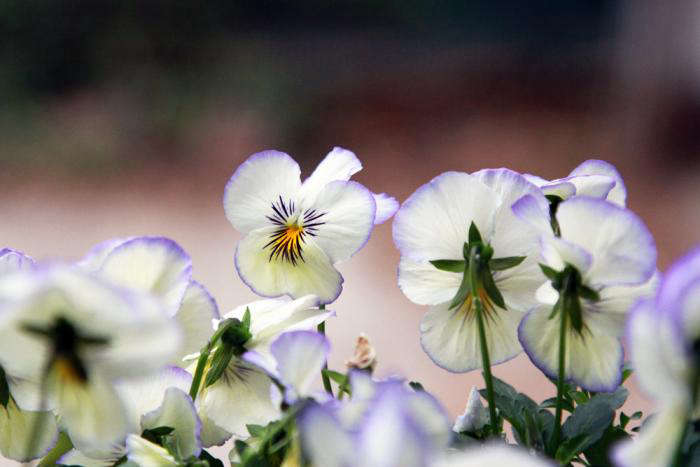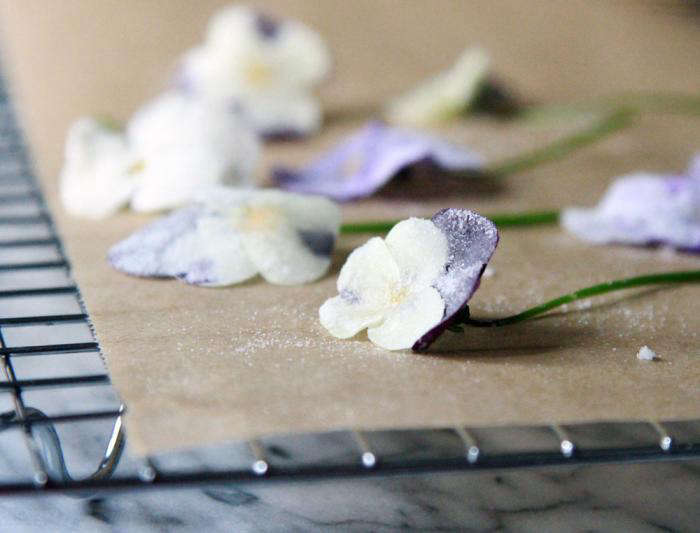I suppose it’s the whiskers, but if there’s one flower that I can’t help but to anthropomorphize, it’s the humble viola. When I spot a clump of these springtime staples bobbing the breeze, I don’t see flowers, but a clan of nattily dressed, goateed gentlemen in lively conversation. Here, a little roundup of viola facts for the curious among us:
(N.B.: This is the first in a series of weekly–well, we’ll try to keep up with it weekly–stories spotlighting a popular plant and some unusual ways to incorporate it into your life. Coming later this week: DIY Sugared Violas and DIY Pressed Violas.)
Photographs by Erin Boyle.

An old-fashioned favorite for springtime garden beds and container gardens alike, violas and their larger and floppier pansy cousins have started appearing on stoops and window boxes throughout my Brooklyn neighborhood.

Viola? Violet? Pansy? What’s what?: The difference between violas, pansies, and even tiny violets can be a little bit hazy–and I’m not an expert–but the basic story follows. Viola is actually the name for a genus in the Violaceae plant family. Within the viola genus are nearly 500 different species of plants, including those that we refer to as violas, pansies, johnny jump ups, and violets. Getting clearer?
I think it helps to think of the whole motley crew as cousins. Whiskered cousins. The variety in these shots are viola cornuta, also called Coconut Swirl Violas; $2.25 for 25 seeds from 2BSeeds.

To cure what ails you: Sometime around the beginning of the 19th century, the viola tricolor, also called heartsease, johnny jump ups, or wild pansy, began to be cultivated and hybridized. Wild heartsease is still used in herbalism to treat everything from skin afflictions to bronchitis. A packet of 75 seeds of Heartsease Viola is £1.99 from Crocus.

Love potion: The ancestor to today’s violas had a starring role Shakespeare’s A Midsummer Night’s Dream. It’s the juice of heartsease that serves as the play’s famous love potion: “Before, milk-white, now purple with love’s wound, And maidens call it love-in-idleness.”

Good enough to eat: Just because you’re not looking for a love potion doesn’t mean that you shouldn’t be eating violas. The delicate flowers, and their cousins, make delightful additions to cakes and salads and can be sugared for a little something extra sweet. Stay tuned for a full tutorial later in the week.

Pretty as a picture: Delicate violas are perfect flowers for pressing. Later this week, we’ll take you through step-by-step instructions for preserving your violas; no special equipment required.
Can’t wait until tomorrow for more violas? See Pansies: A Cheap Date.









Have a Question or Comment About This Post?
Join the conversation